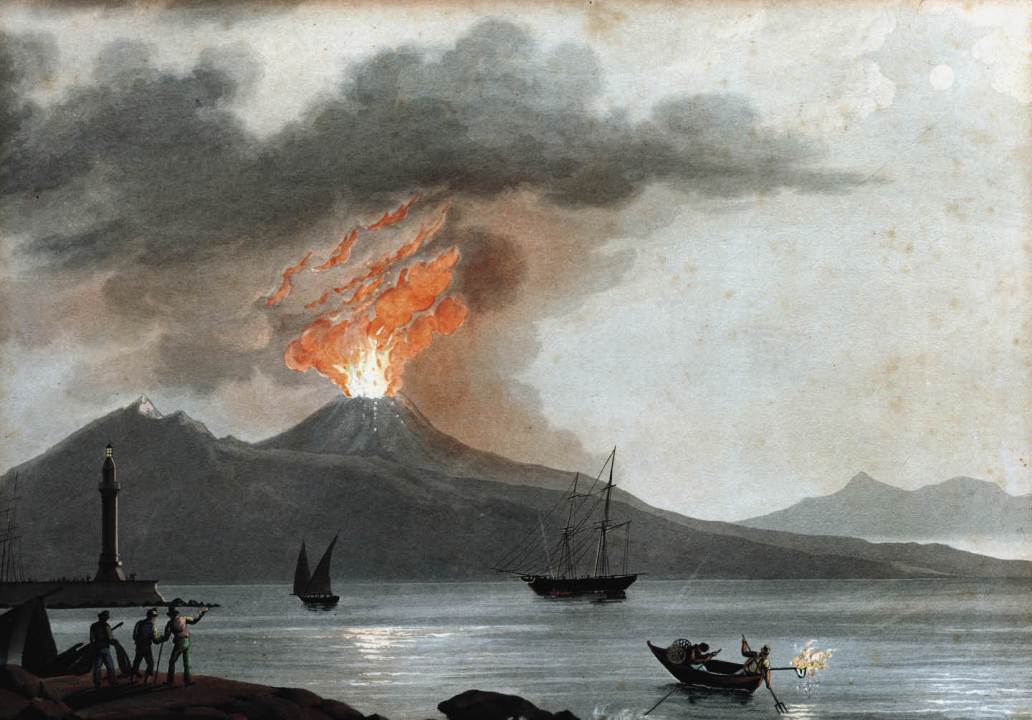Gillian Darley’s book has the pace, colour and deliberation of a Vesuvian eruption, which is fitting; for we must get used to the fact that sooner or later the volcano will erupt again with a devastating power.
Gillian Darley’s book has the pace, colour and deliberation of a Vesuvian eruption, which is fitting; for we must get used to the fact that sooner or later the volcano will erupt again with a devastating power.
The subtitle of the book is quite accurate. Vesuvius probably is the most famous volcano in the world, because unlike all others it has attracted for some 2,000 years multifarious extraordinary people to study it. Darley enumerates these in their legions, showing that Pliny the Younger, writing after the 79 AD eruption, was not the first. She recounts the experiences endured by individuals who include the patient 18th-century diplomat Sir William Hamilton, courageous 19th-century scientists, including Palmieri and Matteucci, who stayed put on the mountain during eruptions, and the overworked American electrical engineer Frank Perret, who came to Naples for a rest but found himself driven to make a vivid photographic and written record of the 1906 eruption. All had to contend in their work with the local religious dogma that Vesuvius can be calmed only by the exposition of relics of San Gennaro, the patron saint of Naples.
Studied from the perspective of many nations, Vesuvius is also the world’s volcano. Thomas Cook, following the growth of understanding of its workings, found to his satisfaction that every time Vesuvius shuddered, is popularity as a tourist destination soared. The history of Vesuvius has been both life- and scene-changing, as each eruption modifies its shape and brusquely dictates the form of its surrounding landscape. With opportunity triumphing over experience, developers built the village of San Sebastiano on land spared by the 1872 eruption, only to see it devastated in 1944.
Darley brings the subject forward to describe the fascination Vesuvius held for the Surrealists, and to Jack Cardiff’s pioneering film of the relatively minor 1936 eruption. Perhaps the greatest 20th-century witness of Vesuvius, however, is Norman Lewis, who described how the 1944 wartime eruption, with ‘smoke like some colossal pulsating brain’, pushed the Neapolitans back to the Middle Ages: ‘hysterics and mass-hallucination in which San Gennaro was paraded out, to halt the lava flow.’
Darley makes very clear that time is running on, and that rampant building development on the slopes of the volcano will add immeasurably to the death-toll of a future eruption. The elegant little device decorating the book, an egg-timer with its sands run out, is eloquent in its simplicity. Read this book and get ahead, because sooner or later Vesuvius will be back in the news, big time.







Comments